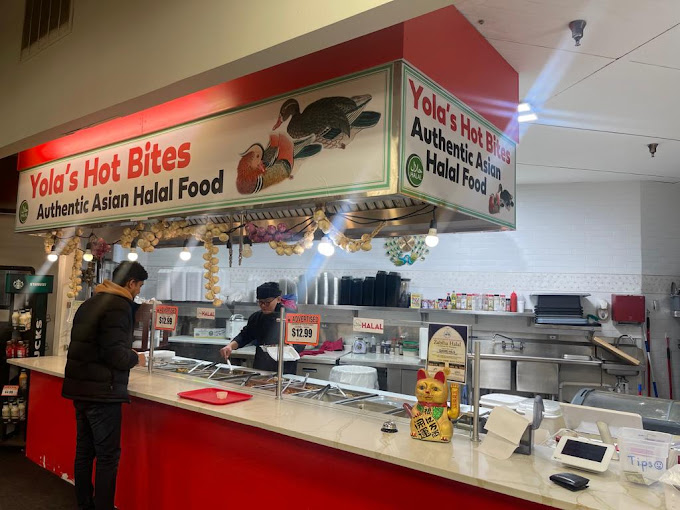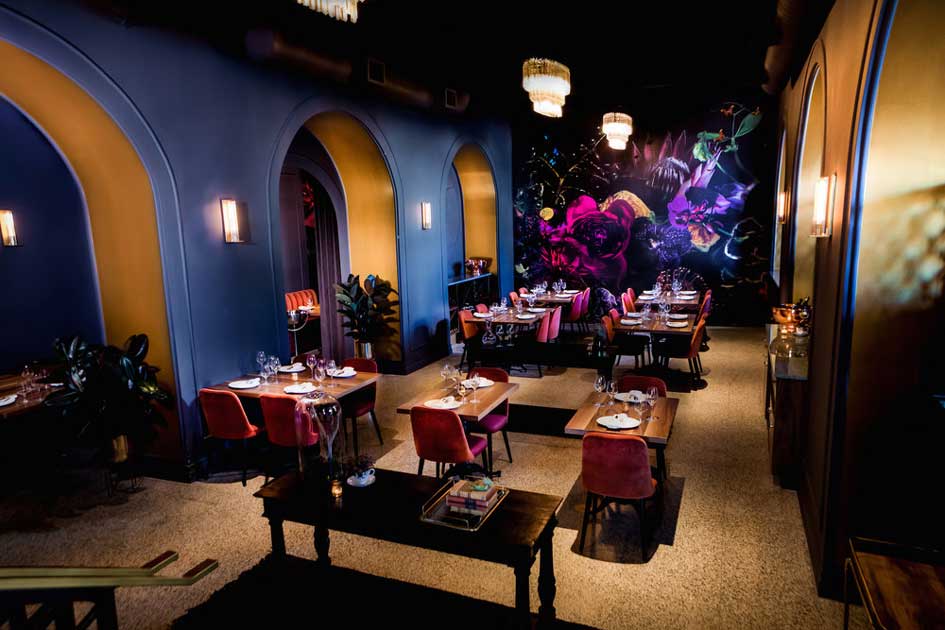Asian Fusion Restaurant: An One-of-a-kind Dining Experience in the Heart of Islamabad
Asian Fusion Restaurant: An One-of-a-kind Dining Experience in the Heart of Islamabad
Blog Article
Savor Authentic Eastern Cuisine With a Pan-Asian Twist for a Culinary Adventure
Getting started on a cooking journey with genuine Oriental food, boosted with a Pan-Asian twist, offers an one-of-a-kind chance to discover the abundant tapestry of flavors that specify the area's varied culinary practices. This experience invites you to savor the beautiful balance of preferences-- wonderful, salted, spicy, and sour-- integrated by aromatic herbs and seasonings. Imagine the cutting-edge combination of Thai curry and ramen or the unanticipated joy of sushi burritos. As you ponder these luring dishes, take into consideration the cultural narratives and historical impacts that form them, each bite offering a tale waiting to be uncovered.

Checking Out Pan-Asian Tastes
In the realm of international gastronomy, Pan-Asian food stands out for its exceptional variety and the harmonious interaction of flavors from various Eastern cultures. This culinary technique commemorates the special active ingredients and rich traditions found across the continent, producing a tapestry of preferences that is both enjoyable and appealing. Trick to Pan-Asian food is its ability to balance different tastes-- wonderful, salty, spicy, and sour-- while highlighting the freshness and high quality of each component.
From the umami-rich soy sauce of Japan to the intense chili peppers of Thailand, Pan-Asian cuisine supplies a comprehensive scheme of tastes. These elements are typically integrated in inventive ways, enhancing dishes with layers of complexity. For example, using aromatic herbs such as lemongrass and cilantro, typical in Vietnamese and Thai cuisine, includes a revitalizing illumination to recipes, while the incorporation of coconut milk delivers a luscious, abundant appearance.
The emphasis on fresh fruit and vegetables and aromatic spices guarantees that each meal is not only a banquet for the palate yet likewise for the senses. Pan-Asian food welcomes restaurants to get started on a culinary journey, checking out the large and varied landscapes of Asian gastronomy with every bite.
Combination Dishes to Attempt
While Pan-Asian food is celebrated for its standard tastes, the modern culinary landscape is increasingly welcoming fusion dishes that blend these timeless aspects with impacts from various other areas. This cutting-edge approach not just honors the abundant heritage of Asian cookeries however additionally introduces novel preference experiences that interest contemporary tastes buds.
An archetype of such a blend recipe is the Korean-Mexican taco, where seasoned bulgogi beef is wrapped in a warm tortilla, topped with kimchi and a zesty gochujang-infused salsa. This combination weds the bold, full-flavored flavors of Korea with the lively, fresh components of Mexican food. Similarly, sushi burritos have obtained appeal, integrating the delicate artistry of Japanese sushi with the passionate, hand-held benefit of a burrito, frequently featuring fusion ingredients like tempura shrimp and avocado with a drizzle of wasabi mayo.
An additional significant recipe is Thai curry ramen, which infuses the creamy, aromatic flavors of Thai curry into the reassuring broth of conventional Japanese ramen, producing an unified mix that entices the senses. These fusion dishes prolong beyond simple uniqueness; they stand for a cooking discussion in between societies, motivating expedition and technology on the planet of Pan-Asian food.
Vital Active Ingredients and Seasonings
To genuinely appreciate Pan-Asian Visit This Link cuisine, one must comprehend the crucial ingredients and spices that develop its structure. This varied cooking style attracts from an abundant tapestry of Eastern practices, utilizing an unified mix of flavors and structures.
Aromatic aspects are essential, with lemongrass, ginger, and garlic being common across numerous Pan-Asian dishes. These components provide an aromatic base that enhances the complexity of flavors. Seasonings such as star anise, cardamom, and cinnamon present warmth and character, resembling influences from areas like China and India.

Cooking Techniques and Tips
Mastering the art of Pan-Asian cuisine calls for experience with its distinct food preparation techniques, each contributing to the dynamic tapestry of flavors this cooking tradition is commemorated for. Central to these methods is the stir-fry, a quick cooking strategy that maintains the nutritional stability and dazzling shades of ingredients. Utilizing a frying pan, the stir-fry method permits also warm distribution, crucial for accomplishing the particular structure and flavor balance of Pan-Asian recipes.
Another essential technique is steaming, specifically prevalent in Chinese cuisine. This mild method keeps the click here now all-natural tastes and nutrients of active ingredients, making it perfect for seafood and vegetables. Dumplings, a cherished staple, often profit from steaming, causing soft, succulent textures.
Grilling, likewise essential, passes on great smoky midsts to meals such as Korean bulgogi or Japanese yakitori (asian fusion restaurant). This method often entails marinating active ingredients, allowing flavors to pass through deeply prior to cooking over an open flame or warmer
Lastly, understanding the art of balancing flavors-- pleasant, sour, salty, bitter, and umami-- is essential. Effectively layering these elements can raise a recipe from regular to extraordinary, using a facility and pleasing culinary experience that symbolizes the significance of Pan-Asian food.
Dining Experiences Worldwide
Around the world, Pan-Asian cuisine uses an exceptional eating experience, celebrated for its abundant tapestry of tastes and lively discussions. This culinary phenomenon has transcended cultural borders, capturing the hearts and tastes of food fanatics worldwide. In multicultural cities like New York, London, and Sydney, Pan-Asian restaurants function as melting pots where culinary traditions from Thailand, Japan, China, and beyond merge, offering diners with an eclectic mix of meals that highlight the area's variety.
The worldwide allure of Pan-Asian food lies in its capability to supply both credibility and advancement. Chefs skillfully marry conventional components article such as lemongrass, soy sauce, and miso with modern strategies, leading to meals that are both refreshingly new and acquainted. This fusion allows restaurants to start a culinary trip that values heritage while welcoming modernity.
Furthermore, eating experiences are boosted via thoughtfully developed atmospheres that mirror the ethos of Pan-Asian aesthetic appeals. From minimalist Japanese-inspired interiors to vibrant Thai-themed spaces, each dining establishment uses an one-of-a-kind atmosphere that matches the culinary offerings. Consequently, clients are not merely eating a dish but partaking in a social experience, making Pan-Asian eating a really worldwide phenomenon.
Verdict
The expedition of Pan-Asian food uses a profound understanding of the detailed interplay of tastes and cooking practices across Asia. By welcoming fusion dishes such as Thai curry ramen and sushi burritos, the cooking journey not just highlights the flexibility of standard active ingredients yet additionally showcases innovative modern techniques. This gastronomic experience, enhanced by cooking techniques and necessary flavors, provides a special opportunity to appreciate the multiculturalism and cooking virtuosity that define Pan-Asian cuisine on an international scale.
Getting started on a culinary journey through authentic Oriental cuisine, enhanced with a Pan-Asian spin, uses an unique chance to explore the abundant tapestry of tastes that define the area's diverse cooking practices.In the world of international gastronomy, Pan-Asian cuisine stands out for its amazing diversity and the unified interaction of tastes from various Eastern societies. Secret to Pan-Asian food is its capacity to stabilize different flavors-- sweet, salty, spicy, and sour-- while highlighting the quality and quality of each ingredient.

Report this page